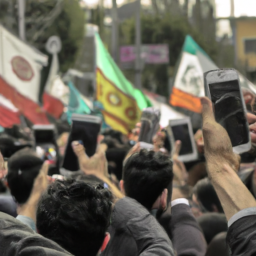In 2009, the world watched as Iranians marching in the streets turned to social media sites like Twitter and Facebook to organize and share their dissent against the government. The use of social media played a crucial role in the Iranian protests, allowing protesters to connect, share information, and coordinate actions in real-time. This marked a significant shift in how political movements could leverage technology to challenge oppressive regimes.
American social media platforms can affect the political systems of different states in varying ways. The effect varies both between and within countries, depending on factors such as government censorship, internet access, and social media literacy among the population. In Iran, where the government tightly controls traditional media outlets, social media became a powerful tool for citizens to circumvent state censorship and express their grievances.
Since the 2009 Green Movement protests in Iran, internet connections have grown significantly, which is why social media is likely playing an even more prominent role in the current unrest. The government's use of censorship, particularly on social media, has intensified as a response to the growing influence of online activism. Platforms like Twitter and Telegram have become battlegrounds for information warfare between the state and its critics.
Aside from the street protests, the state and its critics are engaged in a major struggle online. The government monitors social media activity closely, targeting activists, journalists, and ordinary citizens who speak out against the regime. This has led to arrests, censorship, and the blocking of popular websites and messaging apps. Despite these challenges, Iranians continue to find ways to bypass restrictions and share their stories with the world.
Eight weeks of women led protests in Iran have passed. Boycotts and strikes are now more common tactics of the protesters, who are using social media to amplify their demands for political change. Women have played a significant role in the resistance movement, using platforms like Instagram and Twitter to highlight their struggles and advocate for gender equality.
How personal schisms and political myopia in the opposition abroad prevented the Woman, Life, Freedom movement from bringing down the regime remains a topic of debate. The lack of cohesion and strategic vision among opposition groups allowed the government to maintain its grip on power despite the widespread discontent among the population. Social media, while a powerful tool for organizing and mobilizing, also exposed divisions within the opposition that hindered their effectiveness.
When protests erupted in Iran in 2009, then-President Barack Obama reacted cautiously, concerned that a forceful intervention could make the situation worse. The U.S. government's response to the crisis highlighted the complex dynamics of international relations and the challenges of supporting democratic movements in authoritarian states. Social media played a key role in shaping global perceptions of the protests and influencing foreign policy decisions.
